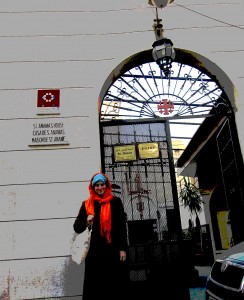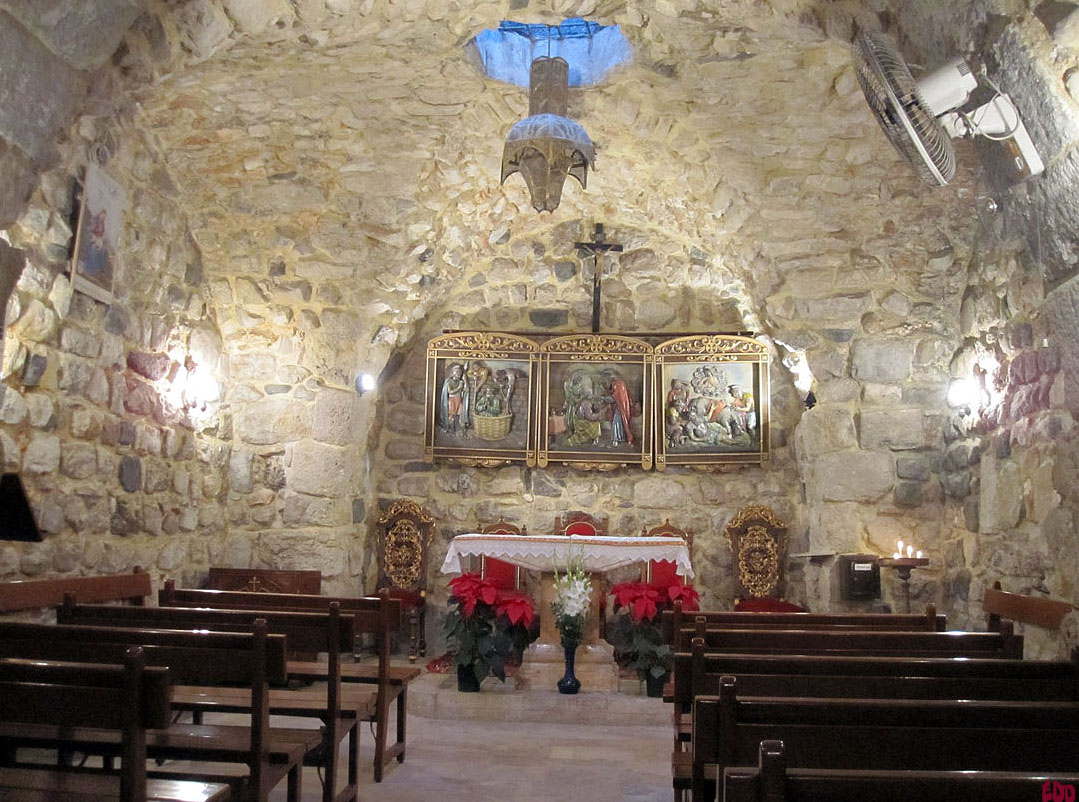 If I had to choose, I’d say that my favorite chapel in Syria is that of St. Ananias in the old Christian quarter of Damascus. St. Ananias is the apostle credited in the Bible (Acts 9) with miraculously restoring the sight of Saul (who later becomes St. Paul). This underground stone chapel is said to be one of the places where St. Paul took refuge in Damascus. Perhaps I was drawn to it because early Christianity is one of my favorite periods to study–or perhaps because, as an archaeologist, I’m biased towards subterranean spaces…
If I had to choose, I’d say that my favorite chapel in Syria is that of St. Ananias in the old Christian quarter of Damascus. St. Ananias is the apostle credited in the Bible (Acts 9) with miraculously restoring the sight of Saul (who later becomes St. Paul). This underground stone chapel is said to be one of the places where St. Paul took refuge in Damascus. Perhaps I was drawn to it because early Christianity is one of my favorite periods to study–or perhaps because, as an archaeologist, I’m biased towards subterranean spaces…
I first became interested in Christianity in Syria when I studied “Christianity in Late Antiquity” with the incomparable Susan Ashbrook Harvey at Brown. A specialist on asceticism, hagiography and “the holy women of the Syrian Orient,” Professor Harvey was the teacher who first introduced me to the dramatic lives and inspired feats of Syrian saints like the brave virgin St. Thecla, the martyr St. Domnina (killed with her daughters), and the ultimate ascetic–St. Simeon.
While I had already read the gnostic gospels in the original Coptic for my Egyptology degree (before signing up for her course), Professor Harvey opened up to me a corner of eastern Christianity about which I had known very little. Beyond being a first-rate scholar in her field, Professor Harvey has also received awards and much praise over the years for being a master teacher. I learned just as much from her about teaching, as I did about Christianity in Syria…
Though most of the other students were (understandably) captivated by all of the gore in the lore of those early Syrian martyrs and saints, the saint who stuck with me the most was St. Simeon (the Stylite)–a Christian ascetic who lived for over thirty years on a small platform on the top of a pillar near Aleppo. Because so many people sought him out for his piety and prayers, St. Simeon escaped to the perch on his pillar to focus solely on his own ascetic devotions and pious prayers. Now that’s what I call getting away from it all…
For centuries, St. Simeon has inspired religious practioners and writers alike. In fact, in 1842 Alfred Lord Tennyson wrote a poem about St. Simeon (along with the physical ailments Simeon suffered) which you can read here. Yes, it’s very long, but it’s still worth the read…
